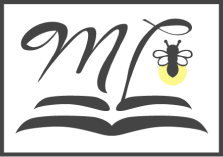My preschoolers love hearing the Ladybird Books Reader Level 1 version of ‘The Enormous Turnip’ and request to hear it over and over.
Very young children engage with hearing language in a story in a unique way and they enjoy the repetition of familiar phrases as the pages of the story progress. As they are not yet able to read the printed text themselves, but are dependent on others to read the story to them, when they are able to help finish a sentence because they know the lines of the story, this fosters the feelings of empowerment and includes them in an active way in telling the story. Empowering young children to actively participate in the story-telling process rather than passively listening helps to develop their predication making and communicative skills and builds confidence.
I love this simple classic story as it has several learning opportunities that I like to include as part of the shared story telling experience. The more young children are involved, included and kept engaged in a story-telling session, the more they’ll enjoy it and benefit from it.
The word ‘enormous’ is new to them so we chat about what it means. We have a fun time coming up with other words or phrases that mean nearly the same thing. Then to help them take ownership of this new word, I’ll ask them to think of something enormous and share it in turn. This helps to build their confidence in then include this new word in their own vocabulary. Then, when I’m rotating the story books on our shelves in the coming weeks and months, I’ll make sure to choose another book or two that contains this new word ‘enormous’ so that they can experience it in other story contexts and once again feel empowered that they already know what this word means.
Gaining a sese of space, size, weight, and amounts are some of the foundational mathematical skills and conceptual understanding of number sense during the early years developmental stages. So when reading stories like The Enormous Turnip I look for opportunities to nurture these skills. As each page is turned and one more person comes to help pull up the enormous turnip, we pause and all count together how many people there are now. 1-2-3-4. I draw their attention to the fact that ‘Four is one more than three’.
Young children’s development of number sense is strengthened with lots of enjoyable, playful, and joyful experiences, observations, and conversations that involve them understanding concepts such as ‘one more than’, ‘one less than’.
Visual literacy is also another important skill to nurture in young children. Helping them to notice certain details in the pictures helps them to develop concentration and focus which help to improve reading comprehension later on. I point out to the facial expressions of each person in turn and ask them, “How does the old man feel?” The children then have the chance to draw their own conclusion and reply that the old man feels tired. So, I’ll ask them “Why?” These types of questions help to get them thinking and gets us all chatting about the fact that the people in the story feel tired because they were working very hard trying to pull up the enormous turnip. These kinds of discussions also help young children to develop empathy, and understanding about helping others who are tired.
At the end of the story, where everyone in the story is sharing a big bowl of turnip soup, I like to ask them about different types of soup that they have tried before. Or I’ll pass the book around for each child to take a good look at the picture of the big bowl of soup and think of an adjective to describe how it might taste. I might introduce a new word here like ‘delicious’ or ‘tasty’ to help expand their own growing vocabularies. Or we have a bit of fun guessing what else was put into the soup besides the turnip.
One beautiful feature of this book and all the reader books in this series by Ladybird Books is on the final page there are a couple simple comprehension questions with picture clues beside them. I always try to make use of this page as taking time to ask these questions while pointing out the picture clues helps young children develop pre-literacy skills such as visual literacy, concentration, listening skills, all of which will strengthen reading comprehension when they start reading later on.
